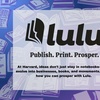After haggling over the length, Kugel and his editors at HUP compromised to publish two versions on the monograph rather than one. Traditions of the Bible, the complete 1,080-page titan, is billed by HUP as a full-scale reference book" and a "sourcebook for Biblical interpretation."
Kugel says he knows other academics from Boston University and the University of Pennsylvania who have also had trouble with HUP editors eager to take the axe to their manuscripts.
Despite the trend towards slim volumes, there are several hefty tomes in HUP's spring line. This season's list includes a 916-page edition of an Indian text, a 880-page Harvard guide to psychiatry, and a 750-page life of Andre Gide.
Furthermore, because non-profit university presses routinely assume deals that might incur losses, they often do the work that commercial publishers "won't even touch," Adams says.
'Glorified Journal Articles'
Although university presses tend to be more lenient with their ventures than commercial presses, conflicts remain between editor and author--in part, as Kugel posits, because of shifts in manner of publishing scholarly work.
"Nowadays, for reasons having to do with general sociology as well as the sociology of learning, the book has come to supplant the journal article as the unit of publication," he says. "This makes for lots and lots of books, many of them really only glorified journal articles or collections thereof."
Gita Manaktala, promotion and publicity manager for MIT Press, says that trade books aren't the only financial lifesaver for university presses.
"There are also other kinds of books that also sell very well for us. Textbooks and reference books also can be quite profitable. They help to subsidize the publication of scholarly monographs," she says.
Even though the MIT Press is not subsidized by the Institute itself, the press publishes a low rate of trade books relative to other large university presses.
Compared to HUP's rate of one third trade books amount to about a quarter of total sales at the MIT Press, according to Manaktala.
Freed says she believes HUP is particularly focused on trade books.
"Harvard University Press publishes far more trade books than most university presses. They're mostly a trade publisher now," she says.
At Yale University Press, also not-for-profit, a body of professors sits on an editorial board that oversees the press to keep academic concerns at the forefront. Nevertheless, economic realities have also forced Yale to be money-conscious.
"I think we've always published trade books, but changes in the marketplace of publishing means that were publishing more [of them] than we ever have," says Pratt.
Read more in News
Panel Addresses Religion and PoliticsRecommended Articles
-
HUP Does Not Engage in "Price Discrimination"I write in response to your article concerning the allegation by the National Association of College Stores (NACS) that Harvard
-
HARVARD UNIVERSITY PRESS.The foundation of a Harvard University Press as announced today, is a significant event in the history of this institution.
-
Pressing Matters Beneath AdamsIn the tunnels under Adams House B-Entryway is a treasure of the House: the Bow and Arrow Press. Part of
-
The KingmakerIf you thought getting into Harvard College was tough, you haven’t tried to slip a manuscript under the thin-rimmed glasses
-
Dummy articleMonday 1:45 a.m. —Press operator Brian M. Byrne oversees the press run. The Crimson is one of only a few
-
COMMENTS ON UNIVERSITY PRESS.That the foundation of the Harvard University Press is to exert an influence of the highest order in the field













